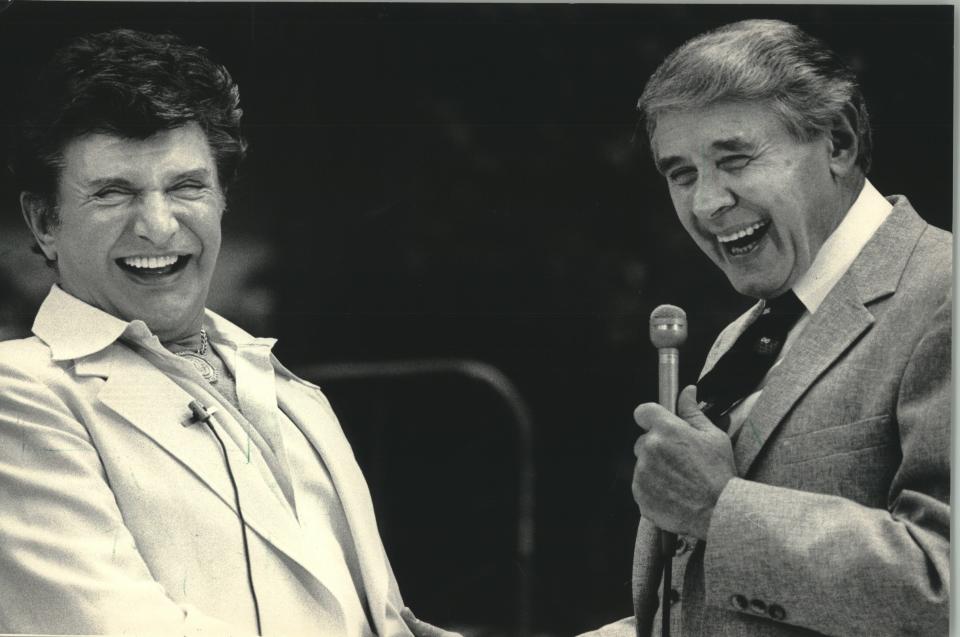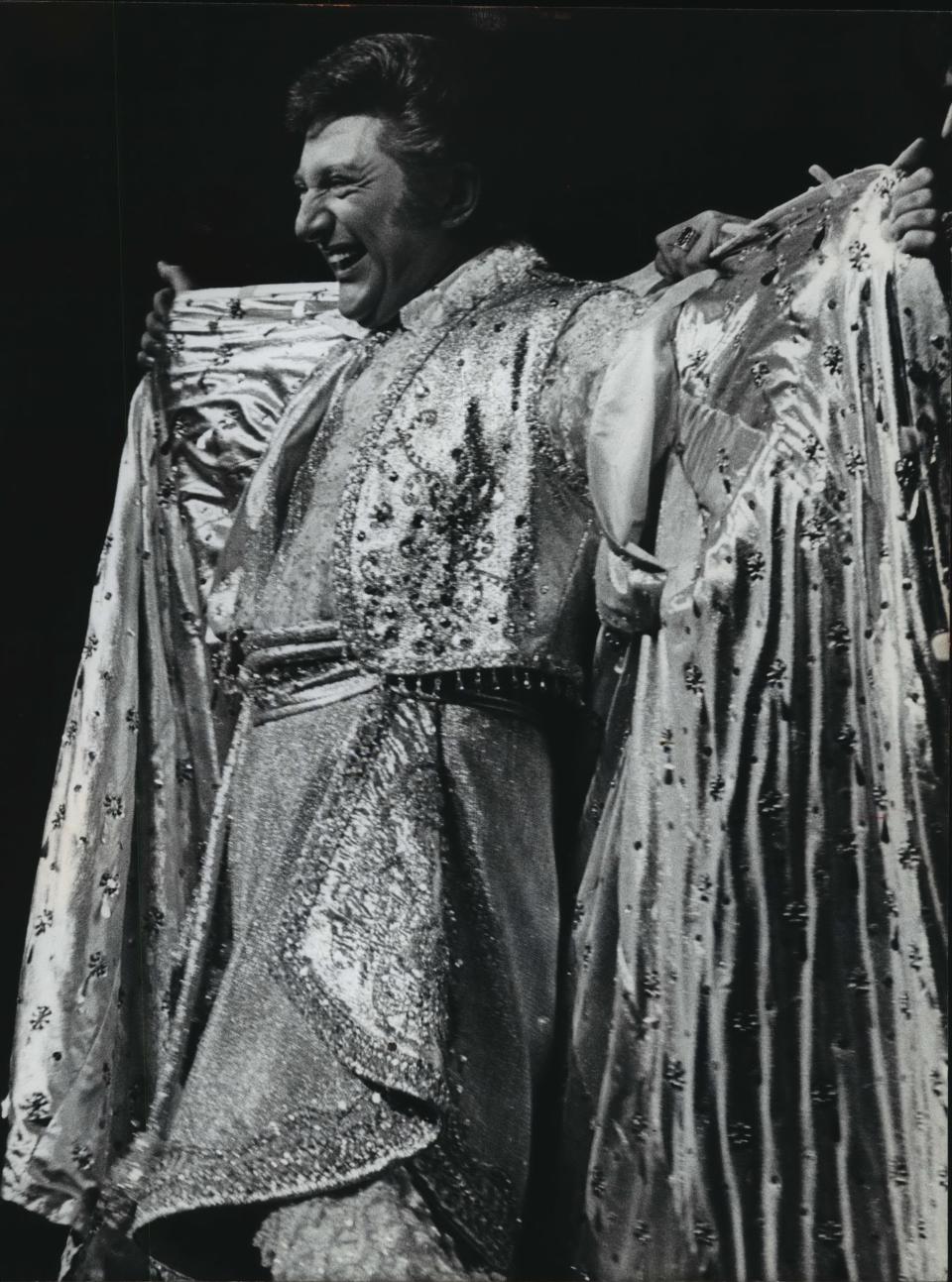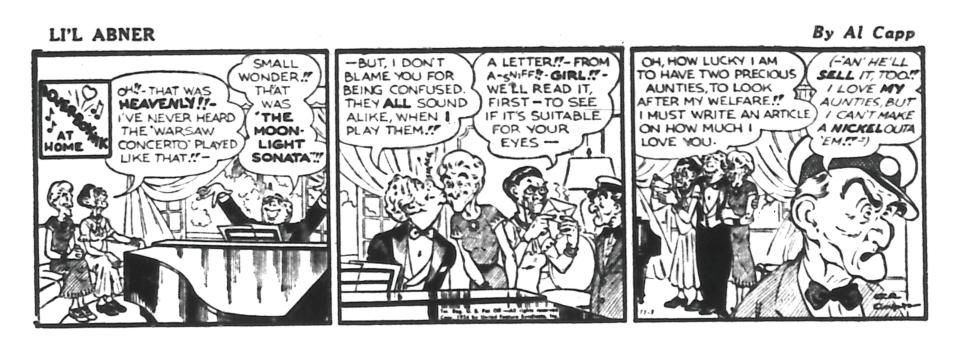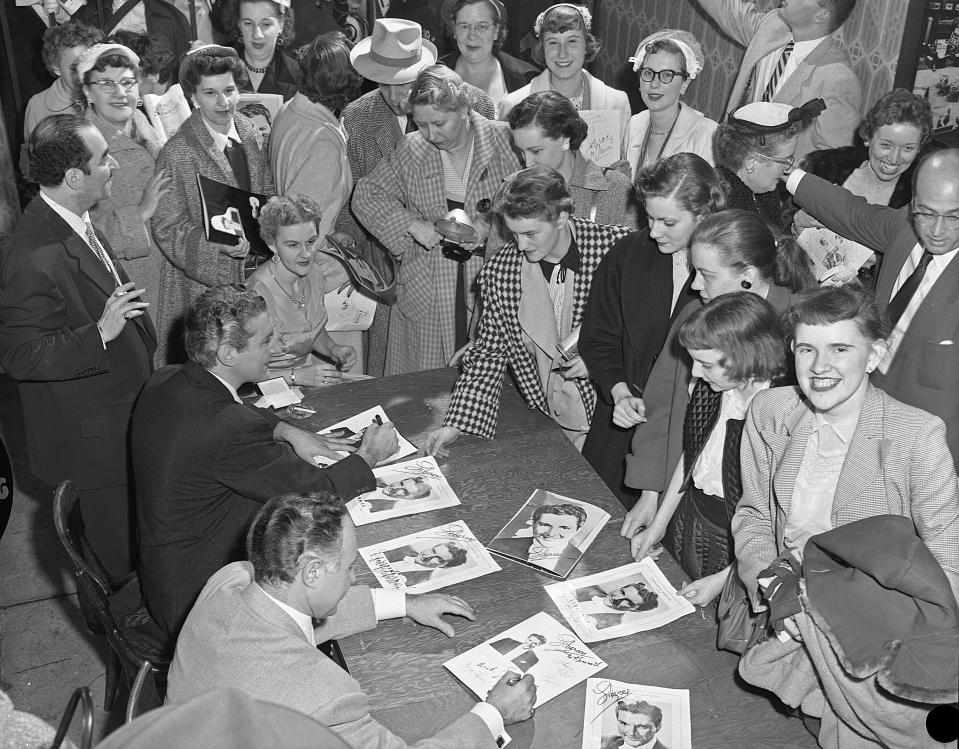11 reasons why Milwaukee's own Liberace is a bigger deal than you think
(Editor's note: This 2019 story has been lightly re-edited since.)
One hundred years ago, Milwaukee's most famous favorite son was born. No, not him. Not him either.
We're talking about Liberace.
Born Wladziu Valentino Liberace in West Allis on May 16, 1919, the artist known around the world by his last name has faded a little from view in the three decades since his death in 1987. But in his day, there was hardly anyone bigger.
Here are 11 reasons why he's worth remembering.
1. Three cities claim him as their own.

Although Liberace was born in West Allis, his family moved to West Milwaukee when he was an infant. And he first made a name for himself on stages in Milwaukee — as Walter Liberace in concert halls, and as Walter Busterkeys in cabarets.
West Allis and the state of Wisconsin both declared Thursday "Liberace Appreciation Day," Milwaukee Mayor Tom Barrett proclaimed it "Liberace Day," and Alderman Mark Borkowski sponsored a resolution saluting Liberace on the 100th anniversary of his birth for his "lifetime of musical accomplishments and his many contributions to the city of Milwaukee." In West Milwaukee, where he graduated from high school, West Milwaukee Intermediate School renamed its main performance space the Liberace Auditorium in 2015; the village also is proclaiming Thursday "Liberace Day."
The Wisconsin Historical Museum is getting in on the act, too: This week, the Madison museum debuted a pop-up display featuring one of Liberace's performance jackets (illustrated with peacocks); it'll be up through July 27.
2. He made pop-classical music a thing.
In 1939, at a classical concert in La Crosse, Liberace asked the audience what it wanted for an encore, and one patron yelled out "Three Little Fishies." Liberace started with an introduction that sounded like Chopin but segued into the big-band hit — drawing huge applause and, as important, widespread attention when the story got picked up nationally. Liberace spent most of the rest of his career mingling pop and classical sounds in his shows, a legacy of "schmaltz" that annoyed some critics but fueled the syrupy classical boom of the 1950s.
3. He made showbiz safe for glam.

From the ornate candelabra on his piano to his over-the-top costumes, Liberace paved the way for glam stars from Elton John to Lady Gaga. In the 1950s, he even lent Elvis Presley his gold jacket — more than a decade before the King went Vegas.
4. He was one of TV's first superstars.
Liberace's syndicated television show — mostly, him playing piano and bantering directly at the camera — was one of the country's most watched programs in the mid-1950s. Some estimates put his TV audience by 1955 at 30 million; for comparison, last Sunday's "Game of Thrones" episode, the series' most-watched ever, pulled in nearly 12.5 million viewers.
5. He was name-checked in everything from Top 40 to comics.

Liberace was such a pop-culture sensation that, by 1954, everyone was riffing on his celebrity. For several months, one of America's most popular comic strips, Lil Abner, featured a character based on Liberace called Loverboynik, to the musician's dismay. One of 1954's biggest hit songs, "Mr. Sandman" by Sheboygan group the Chordettes, held up the fellow Wisconsinite as a component of a dream lover, with "lots of wavy hair like Liberace."
6. He made schmaltz pay.
In his heyday, Liberace was the highest-paid entertainer in the United States. In 1954, he collected a then-record $138,000 for a single performance at Madison Square Garden; in the mid-1950s, he was taking in $1 million a year just from personal appearances.

7. He took on tabloid news, and won.
Liberace, who went to great pains for decades to keep his homosexuality private, successfully sued a British tabloid in 1956 for insinuating he was gay, and forced Hollywood Confidential to pay $40,000 to settle a suit over the magazine's claim that Liberace molested a male press agent. (The Confidential case helped shut down the notorious gossip magazine.)
8. He was an early role model for gay men.
While denying in public that he was gay, Liberace did so with a wink, one that let other closeted gay men know it was OK. "He was what every straight person wants to think gay people are like — so camp, not at all threatening," Elton John once told an interviewer.
9. He helped make Vegas Vegas.
Although he did concert tours around the country — including frequent stops in his hometown — Liberace all but invented the Vegas extravaganza. When he launched his record-setting residency at the Riviera Hotel in 1955, he wore a black tuxedo jacket sporting more than 1.3 million sequins (the jacket drew as much attention as his music).
10. He had his own museum, while he was still alive to see it.
Most museums focusing on one person open after that person is dead. But Liberace flipped the script. After a deal to buy a mansion in Wauwatosa fell through, he opened the Liberace Museum in Las Vegas in 1979 to show off his extravagant costumes, cars and other paraphernalia. (The Liberace Foundation closed the museum in 2010; in 2016, it opened the Liberace Garage in Vegas, displaying eight of the showman's showier vehicles.
11. He was a Batman villain. No, really.
Usually, Liberace played himself on TV. But for two 1966 episodes of the campy comic-book series, he was Chandell, a concert pianist blackmailed by his twin brother (also played by Liberace) into a life of crime.
Sources: Journal Sentinel files; "Liberace: An American Boy" by Darden Asbury Pyron; "Liberace: The True Story" by Bob Thomas; "Shocking True Story: The Rise and Fall of Confidential, 'America's Most Scandalous Scandal Magazine' " by Henry Scott.
This article originally appeared on Milwaukee Journal Sentinel: 11 reasons why Milwaukee's own Liberace still matters
Solve the daily Crossword

